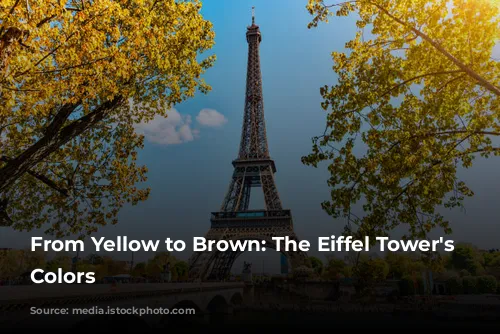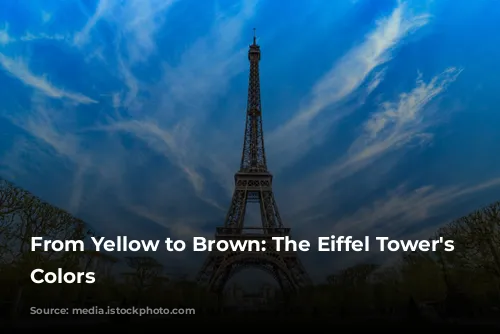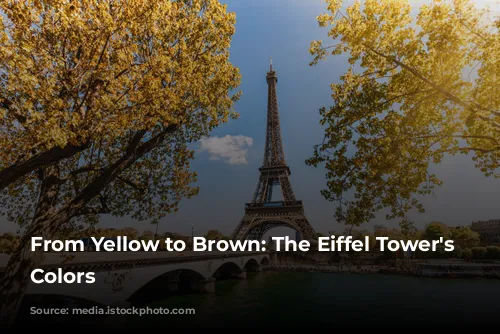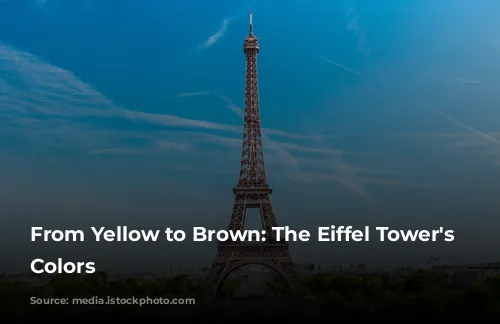The Eiffel Tower, a Parisian icon, has sported various shades over the years, showcasing the changing tastes of the city’s fashion scene. Initially, the tower wore a reddish-brown hue when it opened in 1889. A decade later, it was adorned with a sunny yellow coat. The tower also sported yellow-brown and chestnut brown before it embraced the current, specially mixed “Eiffel Tower Brown” in 1968. To maintain its youthful glow, the tower receives a fresh coat of paint every seven years, using 60 tons of paint. The paint job involves three shades, gradually lightening with elevation, creating a striking silhouette against the Parisian sky.
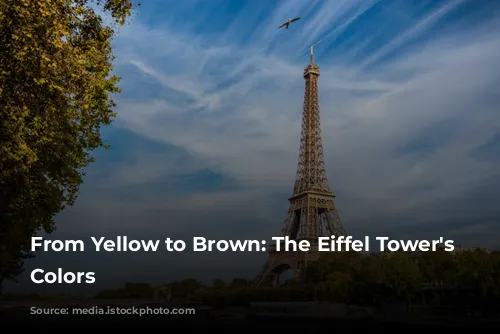
A Monument to Revolution and Engineering
The Eiffel Tower was born out of a competition held to create a captivating centerpiece for the 1889 Exposition Universelle, a celebration commemorating the centennial of the French Revolution. From a pool of 107 proposals, the organizers chose the design submitted by Gustave Eiffel, collaborating with architect Stephen Sauvestre and engineers Maurice Koechlin and Emile Nouguier.
A Tall Tale of Engineering Prowess
Upon its unveiling in 1889, the Eiffel Tower, towering at 986 feet, stood as a testament to engineering prowess. It eclipsed the Washington Monument, previously the world’s tallest structure, by nearly double its height. The tower held this title until 1930, when the 1,046-foot Chrysler Building in New York claimed the crown. Though the Eiffel Tower momentarily regained the title in 1957 with the addition of an antenna, it fell behind another New York giant, the Empire State Building.
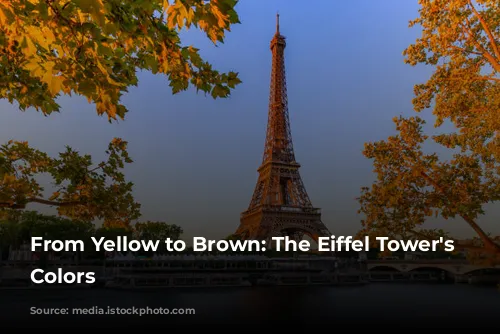
A Beacon in the Sky, a Giant Billboard
In the late 1920s, the Eiffel Tower transformed into a giant billboard. Between 1925 and 1936, a quarter-million colored bulbs illuminated the tower’s steeple, forming the 100-foot vertical letters of the French automobile company Citroën. This dazzling advertisement, visible for nearly 20 miles, even served as a beacon for Charles Lindbergh during his solo transatlantic flight in 1927.
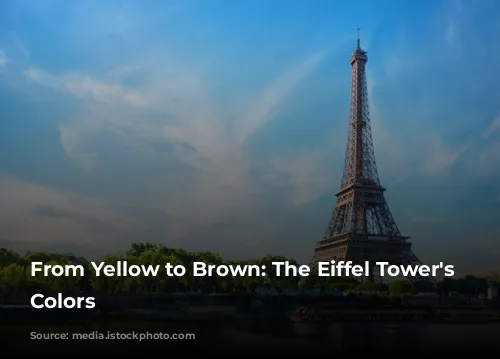
A Controversial Masterpiece: Love and Hate for the “Iron Lady”
Despite its iconic status today, the Eiffel Tower was initially met with resistance. A group of 300 Parisian artists and intellectuals, deeply attached to the city’s artistic heritage, protested its construction, deeming it a monstrous and useless structure. They labeled it a “gigantic black factory chimney” and even claimed that “even commercial-minded America does not want” it. This outcry, published in the Le Temps newspaper on Valentine’s Day in 1887, showcased the passionate debate surrounding the tower’s existence.
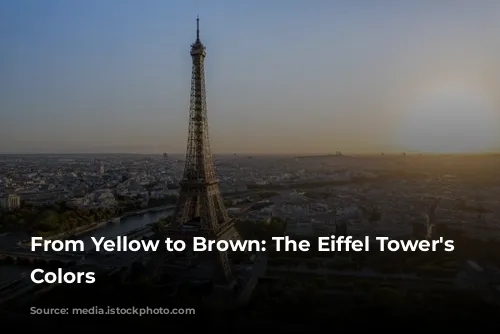
From Scrapyard to Symbol: The Eiffel Tower’s Survival
Eiffel, having financed 80 percent of the tower’s construction, was granted a 20-year concession to recoup his investment. After this period, the Parisian government intended to dismantle the tower for scrap. Eiffel, however, sought to prove the structure’s strategic value, erecting an antenna on the tower and funding experiments with wireless telegraphy. This initiative showcased the tower’s potential for communication, particularly for the French military, leading the city to renew Eiffel’s concession in 1909. Today, over 100 antennae broadcast radio and television signals across the globe, reinforcing the tower’s enduring presence in the world of communication.
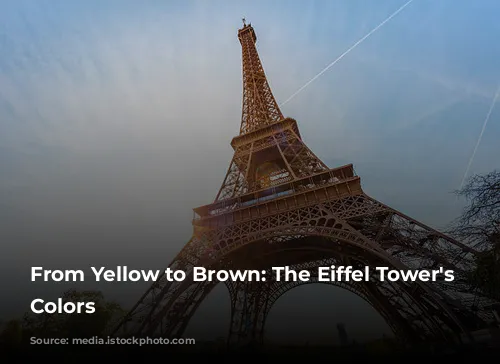
From Battlefield Intelligence to Mata Hari’s Downfall
During World War I, the Eiffel Tower played a critical role in intelligence gathering. The tower’s wireless station intercepted enemy messages from Berlin, providing crucial information to the French military. This information proved vital, allowing them to launch a counter-attack during the Battle of the Marne. Three years later, a coded message intercepted at the station, detailing information about “Operative H-21”, played a role in the capture, conviction, and execution of the infamous spy Mata Hari.

A Tower of Scientific Discovery
The Eiffel Tower served as more than a communication hub. It also became a platform for scientific exploration. Eiffel engraved the names of 72 prominent scientists in the tower’s first-level gallery, and installed a laboratory atop it, where he and French scientists conducted research in fields like astronomy, meteorology, aerodynamics, and physiology. This laboratory hosted experiments such as Foucault’s Pendulum. In 1909, Eiffel constructed an aerodynamic wind tunnel at the tower’s base, which facilitated thousands of tests, including those involving Wright Brothers airplanes and Porsche automobiles.
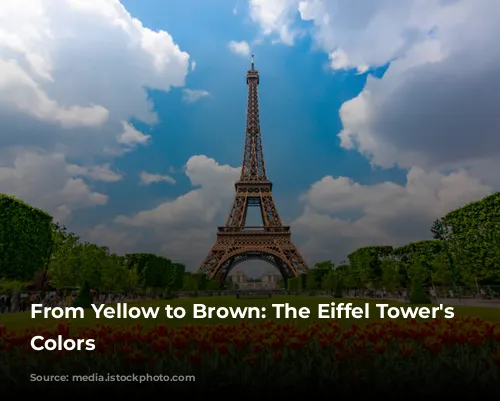
A Stage for Daredevilry: The Eiffel Tower’s Thrill-Seeking History
The Eiffel Tower’s height has attracted adventurers for decades. They’ve attempted audacious stunts, using parachutes, bungee cords, and other methods to test their limits. However, this quest for thrills has not always ended happily. In 1912, French tailor Franz Reichelt tragically died after attempting to fly from the tower’s first floor using a spring-loaded parachute suit. Fourteen years later, aviator Leon Collot perished when his plane, attempting to fly under the tower’s span, became entangled in the wireless station’s aerial and crashed. These tragic events serve as reminders of the risks associated with pushing the boundaries of human potential.
